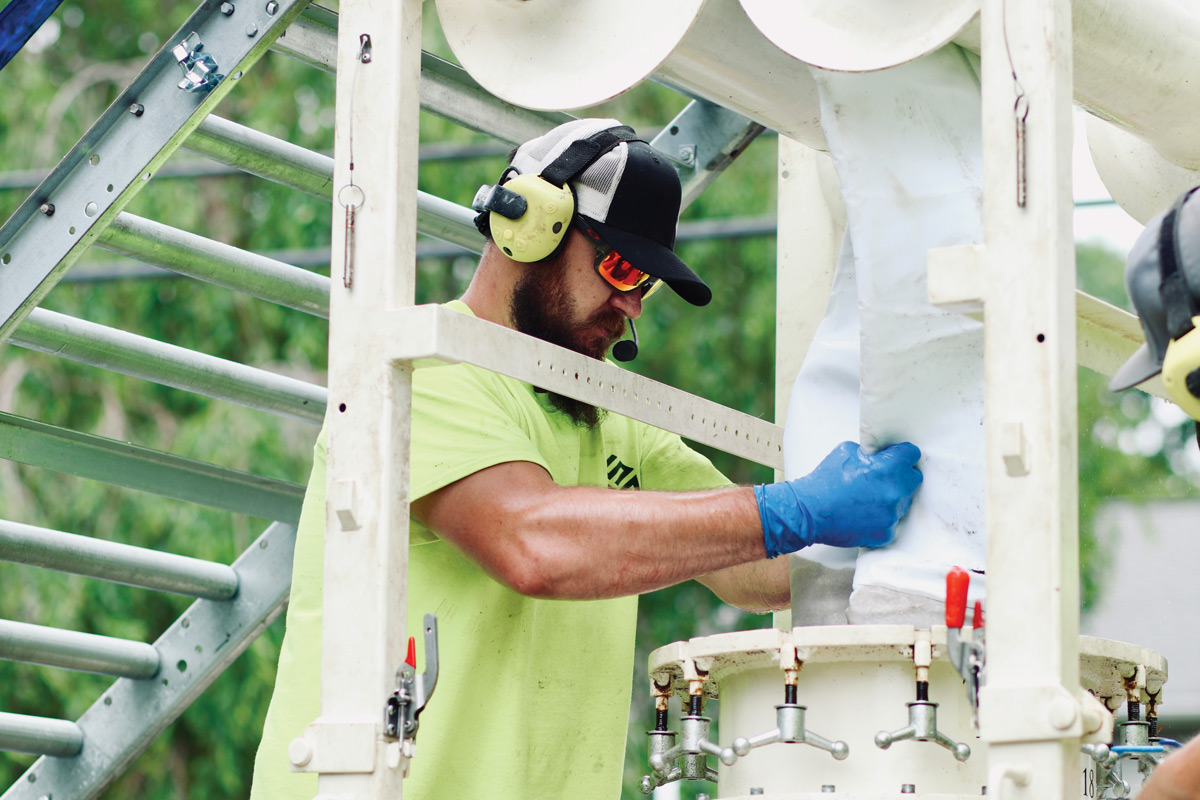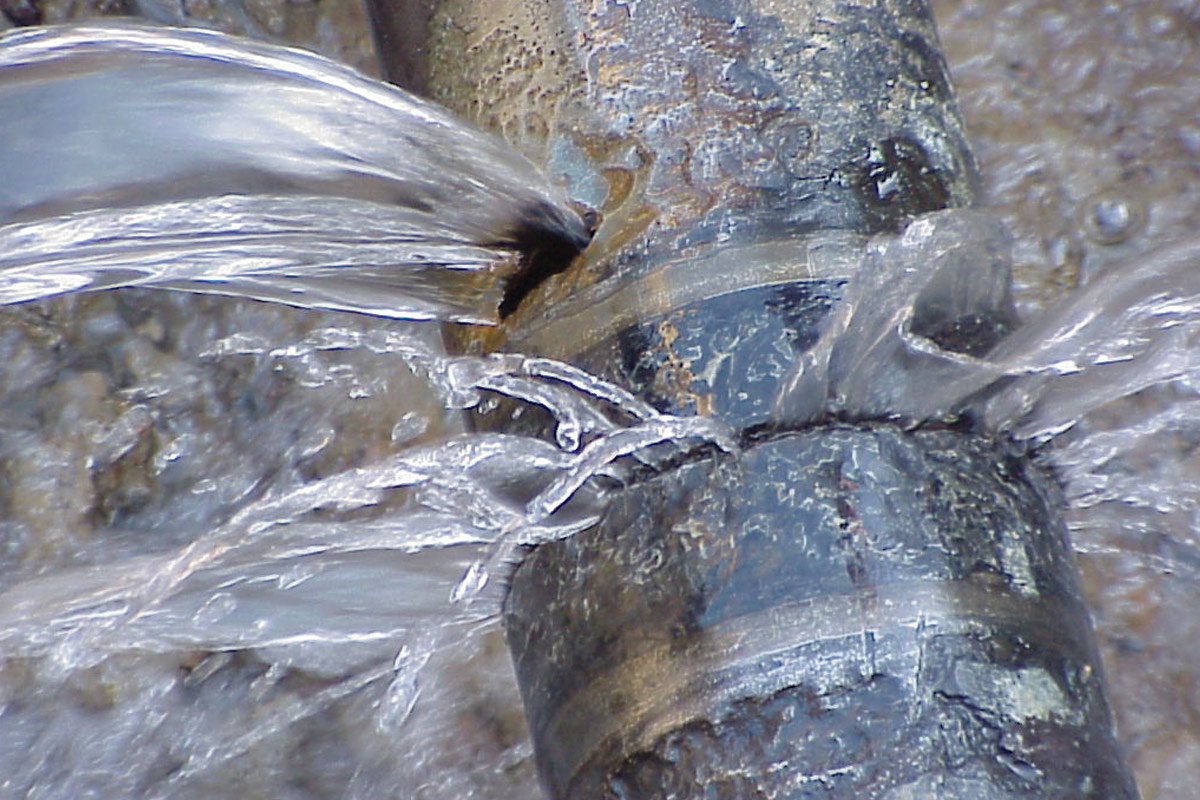Learning Curve: Pipe Cleaning Challenges Faced by Municipal and Private Sector Sewer Maintenance Organizations
April 2, 2014
 There are many challenges facing wastewater collection system mangers responsible for collection system maintenance. One example would be the accumulation of fats, oil and grease (FOG) that restrict and compromise the flow capacity of pipes. This can lead to every manager’s nightmare, the dreaded sanitary sewer overflow (SSO).
There are many challenges facing wastewater collection system mangers responsible for collection system maintenance. One example would be the accumulation of fats, oil and grease (FOG) that restrict and compromise the flow capacity of pipes. This can lead to every manager’s nightmare, the dreaded sanitary sewer overflow (SSO).In addition to this occurrence, mangers struggle with several questions. How can I improve the daily sewer cleaning production rates and increase the quality of our main line cleaning? Am I utilizing my cleaning assets in the best possible way? Are my crews equipped with the best possible training and equipment available? Is there a better way to communicate important information other than verbal conveyance?
We encourage that a holistic approach to sewer collection system maintenance be utilized. In order to do so, we must obtain the information required to make changes to improve overall performance, increase production and lower equipment downtime. We must evaluate our overall program. This would include, but not be limited to, planning and control, standard operating procedures, equipment and training.
 These same issues affect the private sector sewer maintenance groups, as well. If they are not efficient in all aspects of the process, they will not be profitable. In our many years in this industry, we have witnessed many groups move on to other industries. This is due in large part to their lack of knowledge, experience or expertise to compete with those who do.
These same issues affect the private sector sewer maintenance groups, as well. If they are not efficient in all aspects of the process, they will not be profitable. In our many years in this industry, we have witnessed many groups move on to other industries. This is due in large part to their lack of knowledge, experience or expertise to compete with those who do.The lack of this expertise is greatly affecting municipalities across the country. In many cities, their cost associated with cleaning their sewers is constantly increasing. In some cases, this has led to privatization, since the private sector can deliver a better or equal service at a lower cost. With many cities feeling the pressure to cut costs and not increase sewer fees, they are left with only a few choices. One is to increase production, which lowers cost. They must become more effective in their overall performance.
On average, municipal sanitary sewer cleaning crews are actually cleaning sewers only 40 to 50 minutes per workday. Most of the day is used performing peripheral tasks associated with their primary task. With modified planning, control, and operations, we can enable crews to spend more time set up on a manhole and cleaning pipe. This can greatly increase their production rates and lower operating cost.
Common Issues
Let’s move on to some of the municipal issues we have encountered. It should be noted that, due to the fear of the SSO, many have come to manage their programs out of fear, which leads to devoting an excessive amount of time and attention to areas that have recently overflowed. During our evaluations of multiple cities, we have discovered through CCTV that 90 percent of these lines inspected were not in need of cleaning. These are areas that have been put on “hot lists” and are cleaned multiple times within a year.
Having a better understanding of how a typical blockage is formed will give us a better understanding of how to approach maintenance of the system. Typically, these problem lines have been in service for many years. As time goes by, tree or shrub roots in search of water makes its way down to the sewer. The roots are able to penetrate a joint and begin growing through the top of the pipe and hang down into the flowing sewer.
Once infiltration is accomplished, the roots grow quickly as they are nourished by the nutrient laden sewer.
As the roots grow, they widen and form a grease trapping curtain. Grease flowing on top of the sewer flow accumulates onto the root mass. The grease slowly builds up and becomes a larger mass until the sewer is no longer able to flow. You know what happens next—Yes, an SSO. The sewer rises in the system behind the stoppage and flows out of the shallowest manhole. This complete process could take several years or longer. The first part of the process is the roots slowly making their way down to the sewer until infiltration is accomplished. Root cutting is a viable alternative for a short-term solution, but it is not a long-term answer. After cutting, the roots tend to grow back thicker and faster than before. Chemical root control is by far the most cost-effective and long-term solution. When applied properly, the root growth can be eliminated for up to five years. This line can now be removed from the “hot list.”
Here’s another example. How do we determine what is a dirty pipe? We have observed cities that use the practice of catching the debris in a basket during the cleaning process in order to determine whether the line requires heavy, moderate or light cleaning. This measuring system will determine how often the line is to be cleaned. In many instances, if two baskets of material were removed at the completion of the cleaning, the line would be considered heavy cleaning. This line would then be put on the once-a-year cleaning cycle. This is really not necessary. We have calculated the cubic inches within the following line segment, as well as that of a basket that is typically employed in capturing debris during the cleaning process. The following are the results:
• 300 ft, 8-in. pipe, ½ full of debris. Basket size is 8 in. by 12 in. It would require approximately 150 basket loads to remove all debris.
• Same pipe, ¼ full of debris would require about 59 basket loads to remove all debris
• Same pipe, 1/8 full of debris would require about 22 basket loads to remove all debris
• Same pipe, 1/64 full of debris would require about one basket load to remove debris
This type of information can be extremely valuable in formulating overall planning and control for the sewer maintenance group. We do not want to be cleaning “clean pipe” when many pipe line segments within the system may have never been cleaned.
Here’s one more example: the standard operating procedures (SOP) for mainline cleaning. In many instances, the SOP is not helpful to the field operator. Most SOPs have been written by engineers, for engineers and in engineering “lingo.” The content is of minimal value, with some being written just to meet a requirement of having an SOP.
Advice
We are encouraging cities to gather expertise from those who have vast experience in the cleaning of sewer pipe. We would encourage you to venture outside of your own group to gather this expertise, as well as the expertise within your group. But beware, just because someone has been cleaning pipe for 30 years does not mean they are doing it the best way possible. On several occasions, I have received a sever tongue-lashing from older gentlemen prior to the start of our classroom training. But, without exception, they all apologized once the training was completed. They had been trained by the previous operator and not exposed to a better methodology and techniques of sewer cleaning.
Once the necessary information has been gathered, you need to develop a detailed SOP using text and pictures. If the SOP is formatted properly, it can be modified and developed into an exemplary training program, which would lead to an in-house certification program.
Now, on to the importance of training. In this industry, the typical training procedure is to put the trainee with an older, more experienced operator. Once the more experienced operator has provided, what he or she believes to be, adequate instruction, the trainee is then given his or her own unit.
My intention is not to indict anyone, but only to cause some thought. This equipment is quite expensive and complex. The average cost of the newer combination sewer cleaning units is almost $500,000. In all of our experience providing evaluations and training, we have only encountered three operators who have read the operation and maintenance manuals for their particular unit.
If proper training and testing were made available to new operators, the results would be greater production levels, less downtime of equipment, and fewer accidents.
Space will not allow me to touch on other important issues, but my goal in this article is to incite thought about how and why we do what we do. In the words of Albert Einstein: “Insanity: doing the same thing over and over and expecting different results.”
Rusty Nezat is director of Nezat Training and Consulting, which is based in Splendora, Texas.
Tags: Pipe Cleaning






